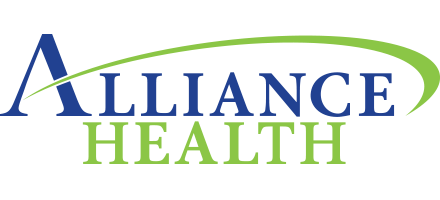Six Easy Health Tests
Here are six easy self-assessments that can help you keep you on track for maintaining your health.
1. HEART RATE
Normal resting heart rate for adults ranges from 60 to 100 beats a minute. A lower heart rate at rest implies more efficient heart function and better cardiovascular fitness. To check your pulse at your wrist, place two fingers between the bone and the tendon on the thumb side of your wrist. When you feel your pulse, count the number of beats in 15 seconds. Multiply this number by four to calculate your beats a minute.
See your physician for a rapid heart rate when symptoms such as lightheadedness, dizziness, fainting or chest pain develop. Rapid heart rates can be completely normal when you are exercising; an elevated heart rate is one that is above 100 beats per minute.
Five way to decrease resting heart rate:
- Exercise everyday. When you take a brisk walk, swim, or bicycle, your heart beats faster during the activity and for a short time afterward.
- Reduce stress and anxiety
- Avoid tobacco products.
- Maintain adequate weight.
- Talk to your doctor about medications that you may be taking that raise your heart rate.
2. BLOOD PRESSURE
Normal blood pressure is 120/80. Elevated blood pressure is defined as readings that are consistently ranging from 120-129 for systolic and less than 80 mm Hg for diastolic. Pre-Hypertension is when blood pressure is consistently ranging from 130-139 systolic or 80-89 mm Hg diastolic. At this stage of high blood pressure, doctors are likely to prescribe lifestyle changes and may consider adding blood pressure medication based on your risk of atherosclerotic cardiovascular disease such as heart attack or stroke. Blood pressure greater than 139/89 requires immediate follow-up with a physician
To improve your blood pressure make changes that matter:
- Eat a well-balanced, low-salt diet
- Limit alcohol
- Enjoy regular physical activity
- Manage stress
- Maintain a healthy weight
- Quit smoking
- Take your medications properly
- Work together with your doctor
3. GRIP STRENGTH
Grip strength has been identified as a simple test that can predict potential heart disease and stroke. Measuring grip strength is easy and inexpensive. Grip strength is measured with a hand held dynamometer and there are normal ranges established throughout life. The average females grip strength ranges between 54-62 pounds and males grip strength ranges between 67-84 pounds. It is an easy test to implement by health care providers and could be used to identify patients with major illnesses such as heart failure, who are at high risk of dying from their illness.
It is not known if increasing grip strength will lower your risk of heart disease or stroke. What we do know is that a strong grip is fundamental to daily function from twisting open a jar to carrying in the groceries.
Ways to improve your grip strength:
(Keep in mind there are many different types of grips and we are recommending these as a good starting point.)
- Carry things: Carrying heavy things is a total body workout. Your grip, core, back, legs and shoulders all benefit from carrying. Check out our previous column for three different types of carries that are simple to add to your workout.
- Hand grippers: Using hand grippers is an easy way to progress your grip strength as they come in different strengths. Perform two sets of 10 reps. If you don’t have hand grippers you can use a tennis ball or something similar to practice gripping.
- Start a general strength training program: A full body strength program will benefit your whole body including your grip. Even if you have a strong grip, whole body strength training will have beneficial impact on your daily function and has been shown to slow cellular aging.
Improving your grip strength will make your daily life better and just may give you a healthier future.
4. BALANCE
Balance is an integral part of everyday activities. There are many risks to our health as we age; however, none is more significant than falling. Falling is the leading cause of both fatal and nonfatal injuries in older adults. As we age or experience disease processes we may begin to lose input from one or more of the three systems used to help us balance.
Try balancing on one leg with your eyes open. Can you make it 60 seconds? How wobbly are you? If you can’t make for 30-60 seconds you may be experiencing balance issues. If you are having trouble with your balance or are afraid of falling, contact you local physical therapist for a balance screen and assessment. They will be able teach you specifically what you need to do to decrease your risk of falling.
Four things you can do now to optimize balance and prevent falls:
- Get moving: A simple walking program will help keep muscles strong and limber. If you’re feeling adventurous, try Tai Chi or yoga. These forms of exercise greatly improving your bodies sense of stability and balance through their focus on slow and controlled movements.
- Yearly vision check: Regular vision checkups will ensure that your vision system is working optimally.
- Medication awareness: One of the most common side effects of many medications is dizziness and drowsiness. Check with your pharmacist to ensure proper dosing and timing to avoid medication combinations that may contribute to dizziness and or drowsiness.
- Remove home hazards: Maintain clear and open walkways, make sure walkways are clearly mark and well lit. Add light to areas where there are steps. Remove items that are tripping hazards such as throw rugs, floor coverings, or extension cords. One of the most common times to fall is in the middle of the night. Take the time to turn on the lights.
5. SLEEP
A good night’s sleep can improve how we move and function. Basic maintenance and repair of our musculoskeletal, hormonal, neurological, immune and digestive systems happens when we sleep. Lack of sleep affects both our mental and physical health. It is associated with increased risk of obesity, cardiovascular disease, type II diabetes and system-wide inflammation. Lack of sleep leads to impaired immunity, cognitive decline and can affect our mood and mental health.
What type of sleep and how much do we need?
To get maximal restorative sleep we need to have four-five sleep cycles per night. Each cycle includes a period of deep sleep and rapid eye movement (REM). Dreaming occurs during REM sleep. During each cycle we spend a progressive amount of time in REM sleep. Personal sleep needs vary, though it is suggested adults get 7-8 hours, while young children need 10 hours, teenagers nine hours and 16 hours for babies.
Tips to get a good nights sleep:
- Decrease your exposure to artificial light. Artificial light such as blue light from alarm clocks, computers and cell phones stimulate the brain and can affect our ability to sleep. Do not use these devices within two hours of bed time.
- Don’t go to bed too hungry or too full. Some people sleep better after a light dinner and others need a snack before bedtime.
- “An hour before midnight is worth two after” – Sleep proverb. The sooner we go to bed the sooner we will enter into our progressively deeper cycles of sleep when the body is rejuvenating itself. These cycles occur in the earlier part of night (11 p.m. to 3 a.m). After 3 a.m. the deep sleep cycles begin to shorten. So the earlier we go to bed the more opportunity for deep sleep.
- Mange stress throughout the day. The most important factor to getting a good night sleep may lie in managing your stress throughout the day. Practice deep breathing or meditation to assist with daily stress management
A good night’s sleep is critical to optimizing our health, movement, and wellbeing.
6. HYDRATION
Water is essential for life. It accounts for about 6 percent of our body weight and performs crucial roles such as carrying nutrients and waste products between our major organs. It helps to regulate body temperature, lubricate our joints and act as a shock absorber.
Warning signs of dehydration:
- Thirst
- Flushed skin
- Premature fatigue
- Increased body temperature
- Faster breathing and pulse rate
- Increased perception of effort
- Decreased exercise capacity
- Dizziness
- Increased weakness
- Labored breathing with exercise
Like vitamins and minerals, our fluid requirements are individual and depend on factors such as body weight and size, age and gender, levels of physical activity and the temperature of our environment.
According to the Food and Nutrition Board of the Institute of Medicine men should aim for 125 ounces (15 cups) of water each day. Women need roughly 91 ounces of water (11 cups) per day.
Periodical assessments of these quick tests are an easy way to take charge of your health and to catch potential health issues before they become serious problems.



